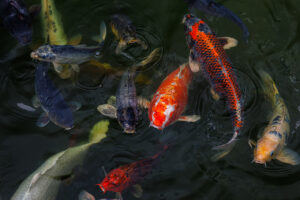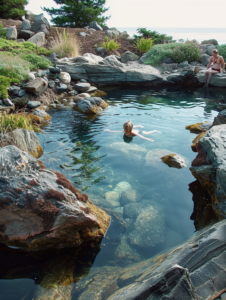Rainwater harvesting systems are often marketed as smart, eco-conscious investments—and in many parts of the country, they absolutely are. You’ve probably seen the videos, heard the stories, and read about the benefits: reduced runoff, emergency reserves, and a more sustainable way to engage with our water cycles. And while many of these claims are valid, the effectiveness of a rainwater harvesting system depends entirely on where it’s being implemented.
Here in the San Francisco Bay Area, it’s essential to pause and assess the real-world practicality of these systems before making the investment.
Let’s Talk About Rain
The Bay Area averages around 20 inches of rainfall per year, with the vast majority occurring between November and March. After that, we often experience long stretches—sometimes 5 to 6 months—with little to no measurable rain. That’s a key factor to consider.
Compare this to regions like the Midwest, where rain events are more evenly spread throughout the year. In those areas, even smaller-scale rainwater systems can periodically replenish themselves during dry months. But here in the Bay, once the rainy season ends, the reservoir sits idle, slowly evaporating unless carefully managed.
The Evaporation Factor
Any properly designed rainwater system must include aeration to avoid stagnation. This typically takes the form of a fountain or water feature that sits above the buried reservoir. While visually appealing and beneficial to water health, this exposure to air—and by extension, sunlight—means evaporation is unavoidable. Even modest evaporation rates can significantly reduce water volume, especially during our long dry spells.
In practical terms, a rainwater harvesting system in the Bay Area has to be much larger than typical systems to retain enough water throughout the year. That increased scale means higher upfront costs, more extensive excavation, and greater permitting considerations.
A Smarter Way to Integrate: During New Construction
One of the most strategic times to consider a rainwater harvesting system is during the construction of a new home or commercial building. When planned early, these systems can be installed under driveways, patio areas, or other hardscape zones—maximizing space and minimizing disruption.
By integrating the system into your initial site layout, you can offset excavation costs, avoid the need for retrofitting, and design with sustainability in mind from the ground up. This proactive approach not only makes installation more efficient but also enhances long-term property value and environmental performance.
Is It Worth It?
The truth is, a rainwater harvesting system can make sense here—but it has to be designed with our region’s unique climate in mind. Systems must be larger, better sealed, and possibly supplemented with other water sources to stay viable through the dry season.
Additionally, capturing and reusing rainwater instead of discharging it into our stormwater system is a strong environmental win. It helps reduce erosion, protects local waterways, and can even provide LEED points or qualify for local incentives in certain municipalities.
Do Your Homework—And Let Us Help
Like with any infrastructure decision, due diligence is key. Understanding your site conditions, rainfall patterns, water needs, and space constraints will help determine whether a rainwater harvesting system is feasible—and how it should be sized and configured.
At Aquascape Creations, we don’t just install systems—we partner with homeowners and builders to think through these variables before a shovel hits the ground. We’ll run the numbers, help estimate the storage volume needed, and offer clear insight into whether the investment makes sense for your property and your goals.
Example: What Does a Bay Area System Actually Look Like?
Let’s put some real numbers on this. For a standard single-family home in the Bay Area:
-
Roof area: 2,000 sq. ft.
-
Annual rainfall: ~20 inches (1.67 ft.)
-
Potential water capture: 2,000 sq. ft. × 1.67 ft. × 7.48 gallons/cu ft ≈ 25,000 gallons per year
That sounds great—but remember, most of that rain falls in a 4–5 month window. To have usable water during the dry season, you’ll need storage capacity large enough to hold much of it.
Typical storage requirements:
-
8,000–10,000 gallons minimum to make any real impact for landscape irrigation.
-
15,000–20,000 gallons if you want to stretch water use into late summer.
-
25,000+ gallons if you’re aiming to use the system year-round for irrigation, wildlife support, or emergency backup.
To achieve that:
-
You’d be looking at subsurface reservoir vaults up to 25 feet long, 10 feet wide, and 6 feet deep.
-
Soil relocation alone could exceed 100 cubic yards.
-
A well-integrated fountain or water feature is essential to keep the water from stagnating.
This isn’t a weekend project—it’s an engineered system, best considered during major landscape renovations or while building a new home.
Ready to explore if a system like this makes sense for your site?
Reach out to Aquascape Creations. We’ll help you balance the vision with the realities—no fluff, no pressure. Just practical, site-specific insight to help you make the right decision.






